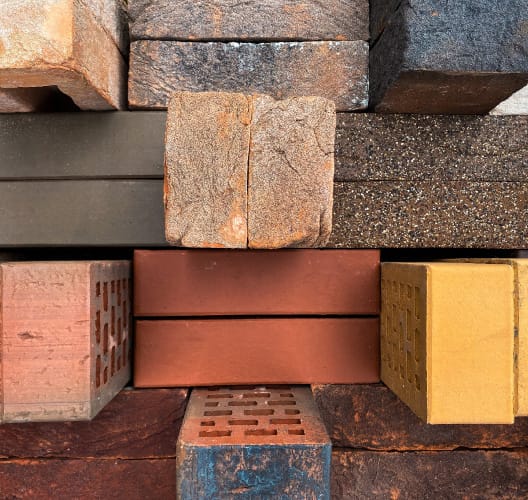Bricks and blocks, integral components of masonry construction, come in various types, each with unique properties, applications, and aesthetic appeal. This comprehensive article aims to elucidate the diverse range of bricks and blocks used in construction, outlining their characteristics, uses, and contributions to the architectural landscape.
1. Common Types of Bricks:
- Clay Bricks:
- Traditional and versatile, made from clay and fired in kilns, offering durability, thermal insulation, and a classic aesthetic for both structural and decorative purposes.
- Concrete Bricks:
- Manufactured from concrete, these bricks provide strength, uniformity, and versatility in a wide range of applications, often used in load-bearing walls and landscaping.
- Sandlime Bricks:
- Made from sand, lime, and water, these bricks offer high precision, dimensional stability, and resistance to moisture, ideal for areas requiring high strength and durability.
2. Specialized Bricks:
- Fire Bricks:
- Highly heat-resistant bricks used in fireplaces, furnaces, and kilns due to their ability to withstand high temperatures without deforming.
- Engineering Bricks:
- Hard-wearing and dense, engineered for structural applications requiring high strength and low water absorption, commonly used in heavy-load-bearing walls.
- Perforated Bricks:
- Bricks with holes or perforations, enhancing thermal insulation, reducing weight, and allowing better mortar adhesion in construction.
3. Types of Masonry Blocks:
- Concrete Blocks:
- Large, rectangular blocks made from concrete, available in various sizes, shapes, and densities, used in load-bearing walls and partitions.
- Cinder Blocks:
- Composed of concrete and coal cinders or ash, these lightweight blocks offer sound insulation and are commonly used in non-load-bearing walls.
- Autoclaved Aerated Concrete (AAC) Blocks:
- Lightweight, precast blocks with aeration that offer excellent thermal insulation and soundproofing, suitable for both load-bearing and non-load-bearing walls.
4. Decorative and Specialized Blocks:
- Glass Blocks:
- Translucent blocks made from glass, used for aesthetic purposes in interior design to allow light transmission while providing privacy.
- Hollow Concrete Blocks:
- Blocks with hollow cores, reducing weight and improving insulation, commonly used in walls where insulation and lighter structures are desired.
- Facing Bricks or Veneer Blocks:
- Thin, decorative bricks or blocks applied as a facing material over concrete or other structural walls, enhancing aesthetics without bearing significant loads.
Conclusion:
The array of bricks and blocks in masonry construction presents a spectrum of options catering to diverse structural, aesthetic, and functional needs. Each type possesses unique characteristics, offering architects, builders, and homeowners a wide range of choices to achieve both practical functionality and aesthetic appeal in construction projects.
